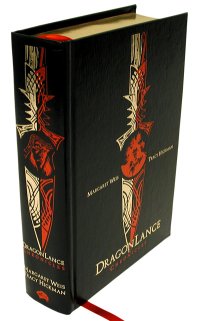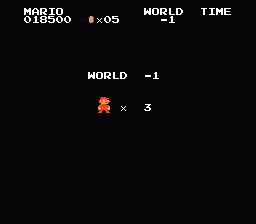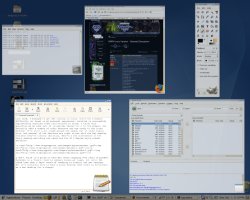There’s a good rundown over at Gamasutra of ground-breaking electronic roleplaying games. A few quick comments on their list:
First, it does the heart good to see Planescape: Torment at #2 on the list; it’s certainly one of the most literary RPGs ever created. (I’d personally put it at #1, of course, but Fallout was so good I can’t really begrudge its place at the top of the list.) The time I spent playing PS:T ranks as one of my best gaming experiences. I’ll stop now before I’m reduced to blubbering fanboy praise….
Second: No System Shock 2? That seems an unusual oversight, given that game’s excellent fusion of roleplaying with the traditional FPS-style interface. I do note that Deus Ex, which seems to me to owe an awful lot to SS2, made the list. That said, I can see why Deus Ex might have surpassed SS2 as a roleplaying game–in DE, the player faces meaningful choices and interaction with others, whereas SS2 mostly kept you on the run from enemies who didn’t interact with you much outside of trying to kill you. I grudgingly submit to the wisdom of the list-compilers in this case, although SS2 remains a must-play game.
A really scary must-play game. A perfect choice for some Halloween gaming, but good luck tracking down a copy….
Third… Dragon Warrior! I sometimes wonder if anybody else played this game; it’s gratifying to see it on the list. It completely consumed my life for a period of months back in the NES days; it deserves more recognition than it gets for bridging the gap between Zelda-style exploration adventure games and the later Final Fantasy-style console RPG genre. I tried re-playing this recently and found its crude and repetitive console RPG gameplay to be almost unbearable; but back in The Day it was quite something to behold. Also, this game has an absolutely beautiful and haunting soundtrack (even if it did get annoying when looped repeatedly through the NES’ speakers for hours on end). It’s the sort of music you find yourself idly whistling 15 years after you beat the game and packed the cartridge away in storage with your NES.
This game had to be one of the only ones where, upon confronting the final Bad Guy, you were given the chance to abandon your quest and conquer the world at his side. And you could actually choose! (Of course, if you chose to side with the bad guy and betray everything you’ve been working to accomplish, the game ended and played some sad music, which was sort of boring. But hey, at least it was your choice, freely made!)
I used to have the Dragon Warrior world map set as my desktop background, but after a while it started making my eyes bleed, so I reluctantly changed it.
And finally, a general comment: it’s a downright shame that almost all of these games are completely unavailable outside eBay or sketchy ‘abandonware’ sites. Book publishers and movie studios don’t let their groundbreaking titles simply disappear from general availability after a few years–but most of the classics on this list are long gone from the market. While a few of these titles (like Dragon Warrior, as I note above) are too dated to be enjoyed by most gamers today, there’s no reason that the Ultima series or Fallout should be so hard to find. Come on, Game Industry–figure out a method by which you can keep classics like these alive and available for future generations to enjoy!
And now you’ll have to excuse me. I have a date with Shodan, and she doesn’t like to be kept waiting.
 Kender fans, rejoice! If you just can’t get enough of the
Kender fans, rejoice! If you just can’t get enough of the  The internet, in its all-seeing wisdom, has of course
The internet, in its all-seeing wisdom, has of course  This weekend, I played my biggest game of Star Fleet Battles yet. My opponent and I each had 600 points with which to purchase a squadron of starships. We each showed up to the field of battle with four ships–my force consisted of a Federation command cruiser, two heavy cruisers, and a plasma cruiser. He was playing the Vudar (a former subject race that rebelled against their Klingon overlords) and fielded a Vudar battlecruiser and three war cruisers. What diplomatic debacle had pitted the peace-loving Federation and the Klingon-hating Vudar against each other that day, none can say.
This weekend, I played my biggest game of Star Fleet Battles yet. My opponent and I each had 600 points with which to purchase a squadron of starships. We each showed up to the field of battle with four ships–my force consisted of a Federation command cruiser, two heavy cruisers, and a plasma cruiser. He was playing the Vudar (a former subject race that rebelled against their Klingon overlords) and fielded a Vudar battlecruiser and three war cruisers. What diplomatic debacle had pitted the peace-loving Federation and the Klingon-hating Vudar against each other that day, none can say.
